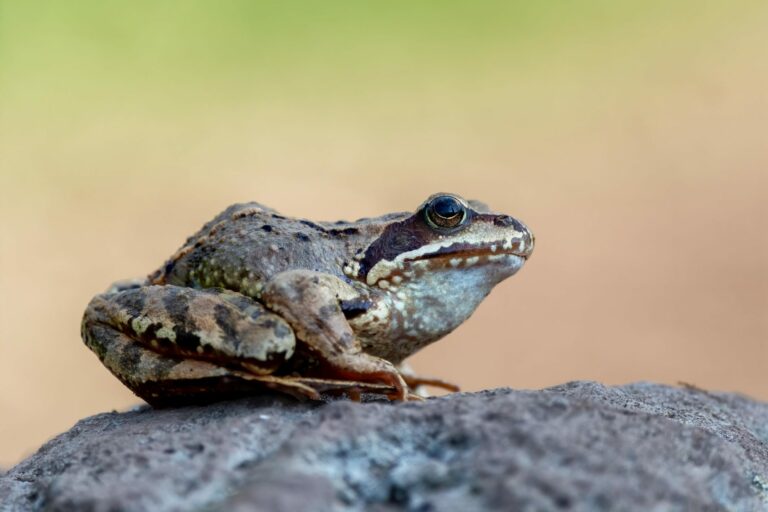Rana temporaria

Rana temporaria, commonly known as the common frog or grass frog, is a frog species that can grow up to 12 cm in length. Its upper side is brownish to grayish-green and often has black spots. There is a temporal spot on each side of the head (Glandt 2018). The underside is light in color and may have a grayish or reddish marbled pattern (Schaefer 2018). The common frog is distributed in the majority of Europe. It inhabits environments such as deciduous and mixed forests, slopes, and gardens. For breeding, which occurs in the spring between February and March, Rana temporaria uses stagnant to gently flowing bodies of water such as puddles, ditches, and ponds. Habitat destruction, the use of pesticides in their habitat, and road mortality during migration to breeding sites are threats to the common frog (Glandt 2018).
Diet: The common frog feeds on insects such as beetles and grasshoppers, as well as arachnids and snails (Glandt 2018).
Conservation status: According to the German Federal Nature Conservation Act, this species is “particularly protected.” In the IUCN Red List of Threatened Species, the common frog is classified as “least concern” throughout Europe. In Germany, it is listed on the preliminary warning list.
-
Glandt, D (2018)Praxisleitfaden Amphibien- und Reptilienschutz. Schnell – präzise – hilfreich. Berlin, Heidelberg: Springer Berlin Heidelberg.
-
Schaefer, M (2018)Brohmer – Fauna von Deutschland. Ein Bestimmungsbuch unserer heimischen Tierwelt: Quelle & Meyer Verlag GmbH & Co